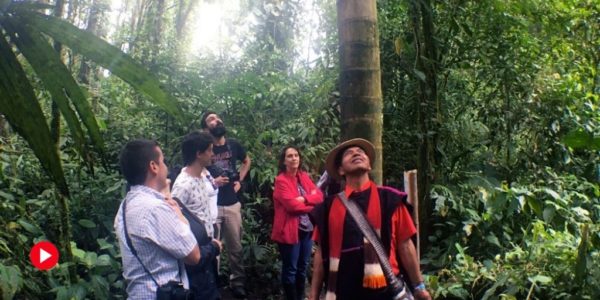Monetising nature: a metaphor too far?
Natural Capital Valuation is a fiercely debated approach to account for nature in business and management decision processes. A new report by Aled Jones and colleagues finds that without extra checks in place to accompany the valuation frameworks, there is a real risk that biodiversity loss actually worsens as monetisation tools are embedded — and that they are not being used as intended.

The use of natural capital (and recently human and social capital) as a way of capturing externalities for business and government policy is gaining traction. Considering nature in our decision making is of course critical and to date society’s impact on nature has not been altogether positive. Therefore, parts of the environmental movement have positively embraced natural capital as a concept. However, others have seen the rush to incorporate the methods associated with natural capital valuation, accounting or ecosystem services into business as problematic.
Natural capital is first and foremost a metaphor, discussions at the Debating Nature’s Value conference in Cambridge in April 2018 concluded — something that both ‘sides’ of the argument could agree on. The key challenges lie somewhere else: when does the metaphor become reality and is it possible to keep the concept of natural capital in the metaphor box while using it in practice.
Moreover, when natural capital includes monetisation, who polices the actual decision-making process as it plays out? Could a business ever argue that the monetary value of a bee is no different to small autonomous flying pollinator robots and therefore it is perfectly fine, through natural capital argument, to spray neonicotinoids over crops as they can maximise overall capital value in that way? While the use of natural capital in circumstances that lead to the ‘correct’ outcome (such as the use of natural capital cost benefit analysis to justify banning neonicotinoids) is a good use of the metaphor, what about those times when it leads to a ‘bad’ outcome?
For our new paper in Conservation Biology (Temel et al. 2018), Anna Temel, Nikoleta Jones, Lenke Balint and I explored 21 case studies of natural capital valuation, i.e. of assigning economic value to an ecosystem. The approaches to natural capital valuation we studied included 15 cases applying the so called Payment for Ecosystem Services framework, three Cost Benefit Analysis cases, and three Compensation Payment Schemes. To make the most of our investigation, we only included case studies where the outcomes were known and where some level of independent evaluation had taken place.
There are a number of criteria available, designed to help assess whether a particular part of landscape that is of interest should be subject to valuation as part of its management or not (Farley, 2008; Turner et al., 2003) — such as scale, uniqueness and threat: Ecosystems that are local, ‘non-unique’ and ‘not threatened’ are considered level I – appropriate for natural capital valuation techniques; Ecosystems that are global, ‘unique’ and threatened are considered level III – not appropriate for natural capital valuation because their value can arguably be judged as infinite; those considered to fall in between those two categories (level II) can benefit from natural capital valuation techniques, it is said, provided some other form of protection is included (for example a minimum standard).
Now unfortunately, in practice natural capital valuation is often used for the least suitable (level III) ecosystems – and perversely, precisely because those ecosystems are threatened and unique. From our case studies, we found that five had positive environmental outcomes, six had mixed outcomes and ten had straight forward negative outcomes where biodiversity was lost or the ecosystem was negatively impacted. As highlighted in the paper: valuation may be effective in certain circumstances, yet this has rarely been the case in practice without additional policy measures to protect threatened ecosystems (Temel et al., 2018).
So, while the use of natural capital as a metaphor to allow nature to be considered in decision making is a worthy idea in a capital-based economy, unfortunately in practice decision makers are not that sophisticated at the point of making a decision. Without extra checks there is a real risk that biodiversity loss will actually get worse as monetisation tools are embedded in decision making and we may realise too late that they are not being used as intended.
It is vital to recognise the importance of further regulation and remember that natural capital is only ever a metaphor, if we want to make the natural capital concept work for nature (and us!) – and not against it.
References
- Farley J, 2008. The role of prices in conserving critical natural capital. Conservation Biology 22:1399–1408.
- Turner RK, Paavola J, Cooper P, Farber S, Jessamy V, Georgiou S. 2003. Valuing nature: lessons learned and future research directions. Ecological Economics 46:493-510.
- Temel, J, Jones, A, Jones, N, Balint, L, 2018, Limits of monetization in protecting ecosystem services, Conservation Biology.
This work was supported as part of the AHRC Debating Nature’s Value network which is funded by the Arts & Humanities Research Council, grant number AH/N006232/1.



